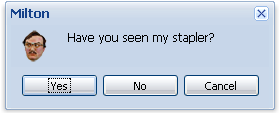So I’ve finished reading my copy of the book Learning Dojo By Peter Svensson. It was a pretty easy read and contained a lot of good info. Overall it’s an okay book, though there are parts where it seems a little rough around the edges, however, I’ll get to why I think that in a bit.
So what is Dojo? Dojo is a free JavaScript toolkit similar to YUI and jQuery, though it bills itself as being larger in terms of features and functionality than the existing JavaScript toolkits. Visually, the widgets it provides (which Dojo refers to as Dijits) are pretty slick and easy to use. You can see a demo of many of them here (this link is unrelated to the book).
Dojo is for people who know JavaScript and who want to add more gagets to their development tool belt. Even though Dojo offers alternative ways to do certain things (like inheritance and finding elements by their ID), you can’t really use it unless you have a decent understanding of JavaScript. Well, you could, but you wouldn’t get very far.
Learning Dojo appears to be aimed at giving web developers a broad introduction on what Dojo can do. It starts off with a two chapters introducing Dojo and then follows them by having chapters dedicated to a particular area of interest – like Forms, Dijits (what Dojo calls widgets), Layouts, Ajax, etc. The author even provides the Layout chapter online as a preview for the book, it’s located here. That chapter gives a good sampling of what the author’s writing style is like.
Overall I thought the book was decent. It’s not something I’d rave about, but its a solid book and contained a lot of info and examples. I feel like it gave a nice introduction to what Dojo is and how it could be used in the real world. I found the chapter on “Data, Trees, and Grids” useful. I had been wondering about easy ways to do grids and to read RSS feeds (the book didn’t discuss RSS feed reading, but it mentioned a library that could do it), so I was pleasantly surprised to come across this info.
My only criticisms of the book were some formatting, editing and spelling issues I ran into. Around 5% of the code examples had indentation issues. The tabs would be aligned incorrectly in certain parts of the example. I’m guessing its because a mixture of space and tab characters were used. However, I don’t know, and these examples were still readable. This was mostly just an annoyance. Also, at the very end of Chapter Two, the “JSON” section had 3 small examples where the code was not printed correctly and it was unreadable. This was upsetting, though it was the only place where I encountered this.
Anyway, if you’re looking for a book on Dojo, Learning Dojo, while rough around the edges, does provide a decent introduction and contains some handy examples.
Also, like I mentioned in a previous post, I was sent this book for free by the publisher with the only condition being that I write a review of what I thought. I don’t get any money if you buy it.
And lastly, if you want to play around with Dojo, you can download it for free at their website.


